The use of color predates modern humanity. Color options have expanded beyond the umber-ochre color line from the days when it was common to grind pigments with a quartz rock or abalone shell to make paint for body adornment and early cave DIY projects. Unfortunately, grinding pigment is still with us.
Grinding, or dispersing, pigment is a practice critical to a number of industries. In coatings, the dispersion of colored pigments is critical to achieving the desired color, stability and weathering performance properties. The quality of the dispersions also affects the economics of the use of colored pigments. Non-optimal/under-dispersion can lead to decreased tint strength and reduced economic efficiency through higher formulation costs. Going the other way, more grinding costs time and money, with diminishing returns for energy input and tint strength achieved. Most pigments have a point at which their color properties are balanced between color development and processing expenditures.
Coatings companies spend a lot of resources on grinding pigments. As an alternative to grinding their own pigments, there are third-party specialists that can take on this step and simplify production. Alternately, a number of pigment manufacturers have brought forth ‘easily dispersed’ versions of their pigment chemistries. There have been easily dispersed versions of pigments in the past, but it was only recently that complete color systems with a range of usable pigments have been marketed. There are now a wide range of organic and inorganic pigment chemistries available in easily dispersed form.
To understand the advantages that easily dispersed pigments bring, the alternatives to grinding pigment in the standard way, along with commercial dispersions must be examined.
Standard Pigment Grinding
Most pigments come in a dry form that must be dispersed into a coating. The pigment is added to a solvent and resin solution (or water with additives) in a pre-mix. Shear from mixing and grinding breaks down agglomerates and aggregates, and the surface of the pigment is wet-out. Advanced additives are used to facilitate this wetting and dispersion that happens during pigment grinding. Specially engineered equipment in the form of horizontal or vertical media mills, rotating ball-mills, three-roll mills and various rotor-stator configurations have been developed to grind the pigment. Once pigment grinding is completed, the dispersion is let down into the final form for use. Figure 1 shows a schematic of the standard pigment grinding process.
There are costs associated with pigment grinding activities, which include:
- Labor;
- Mill consumables (e.g., seals, media, linings, pumps);
- Electricity/other utilities;
- Mill clean-up (e.g., solvents and supplies);
- Loss of material in the mill (e.g., in chamber, hoses and pumps);
- Disposal and handling of cleaning and wash-up solvents;
- Possible contamination from previous batches and equipment (steel and media);
- Working off out-of-specification or contaminated materials;
- Equipment capital expenditure.
There are also operational considerations with grinding pigment:
- Variability in pigment dispersion properties from lot-to-lot;
- Scheduling the right batch size for the right mill size;
- Variability in how long it will take (or number of passes) to grind pigment.
The dispersions can be used in many forms depending on the need of the complete coating production system. It can be as simple as a single pigment dispersion that is used in the finished coating. The dispersion may be used in a tint-cell system either as a complete formula or as an intermediate for formulating flexibility. Multiple pigments can be co-ground together to eliminate the step of blending single-pigment materials. Different methods have different applications based on the need for the coating, the production equipment available and the complexity of the products offered. All these procedures depend on pigment grinding.
All the complexities and cost of grinding pigment are necessary because improper processing can lead to reduced efficiency in raw material usage or poor overall coating properties. Because grinding pigments is so basic to coatings production, many companies, even large, sophisticated, multinational companies, have a limited accounting of all the costs associated with dispersing colored pigments. There is often just a basic costing model for pigment grinding without consideration of how difficult the pigment is to grind, how much time and effort are needed to maintain quality, and the complexities of scheduling production.
Commercial Dispersions
Commercial dispersions offer an alternative to grinding pigments in-house. The time-consuming and messy steps of dispersion manufacturing can be outsourced, greatly reducing complexity. The dispersions can be seen as two general types. General commercial grades offer general pigments in a widely usable formula, while custom dispersions can be tailored to, or even follow, a specific formula given to the dispersion house.
General-purpose dispersions based on common pigment chemistries can be economical to use in a wide range of systems with acceptable results depending on the technical demands and performance requirements of the final coating. Higher loadings of general dispersions can lead to performance degradation due to interference in film formation and final resistance properties.
Custom dispersions can be tailored to the specific chemistries being used to address compatibility and performance requirements. Higher-performance pigments or even specified pigment grades can be used to ensure optimal performance. The more customized a dispersion, the less it is able to benefit from the economic benefits of more general dispersion logistics. In complete custom dispersions, inventory and logistics must also be factored in.
Easily Dispersed Pigments
Easily dispersed pigments provide a third way for coatings companies to incorporate color into their systems without the complexity of grinding the pigment in-house or the compromises of utilizing pigment dispersion houses. Easily dispersed pigments, especially for high-performance coatings, offer decisive advantages. First, what is meant by an easily dispersed pigment? An easily dispersed pigment should:
- Produce dispersions without the use of dedicated dispersion equipment such as ball-mills, small-media mills, rotor-stator type mixers or other equipment. Common high-speed/shear mixers are the preferred equipment needed.
- Be available in a complete range of pigment chemistries to formulate a wide color envelope.
- Produce dispersions that are equal in performance to those made with standard pigment grinding equipment.
- Provide tight control over lot-to-lot consistency.
- Work well with the additives used to make it easily dispersible to not compromise the performance of the end coating.
- Optimally be compatible with a wide range of resin systems in both solvent, waterborne and 100% solids formulas.
The Shepherd Color Co. has spent the last decade developing the Dynamix®line of high-performance easily dispersed products based on CICP (Complex Inorganic Color Pigments) and other select oxides. CICPs have been the standard for decades in the highest performance coatings with respect to durability, color retention, heat stability and IR reflectivity. These problem-solving pigments are now easily incorporated into a wide range of coatings (Table 1).
Advantages of Easily Dispersed Pigments
Easily dispersed pigments bring convenience, consistency and profitability. Convenience comes from being able to just stir the pigments in and the ability to make large or small batches while skipping the pigment grinding step. They are consistent because they reduce the variability of color through controlled surface chemistry, which gives locked-in color. The convenience and consistency of easily dispersed pigments brings profitability due to overall lower costs because the time-consuming and costly pigment grinding steps can be eliminated (Figure 2).
Convenience
Easily dispersed pigments bring convenience because they greatly simplify the pigment dispersion process. Instead of the time-consuming and complex steps of grinding the pigment, complete dispersion can be obtained using simple high-speed mixers. In most instances the same formulations can be used and processing can start in the pre-mix tank just as with standard production practices. Once a level of energy input roughly equal to the energy used to make a standard pre-mix is obtained, the now completely dispersed easily dispersed pigment can skip the pigment grinding step and go directly to the let-down tank. This brings many advantages:
- Reduced labor to run the mill;
- Less equipment to maintain;
- Reduced energy usage;
- No mill clean-up materials for greater sustainability;
- No loss of material in mill (e.g., in chamber, hoses and pumps);
- Greater scheduling flexibility.
While easily dispersed pigment technology has been around for decades, especially in the TiO2 industry, the newest generations of these pigments have improved dispersion properties. These improvements can be seen in the dispersion data for a common easily dispersed version of TiO2 (PW6) and a recent version of easily dispersed CICP black (PBk28) in a solventborne acrylic with a high-speed mixing blade (Figure 3). While the TiO2 gains full dispersion of greater than a 7 Hegman, it takes around 30 minutes to achieve this level. The easily dispersed CICP black gains full dispersion in as quickly as five minutes. The easily dispersed pigment works by just stirring-in.
This easily dispersed property works not only in liquid coatings but also in powder coatings where the quick wetting-out ensures complete and consistent dispersion in the extrusion step.
Because dispersions based on easily dispersed pigments can be made on high-speed mixers, small or large batches can be made depending on demand. In addition to freedom in production-scale batch sizes, new formulas can be quickly scaled up from the laboratory through to full production.
Consistency
Easily dispersed pigments bring consistency to the dispersion of colored pigments. There are many different technologies for making pigments easily dispersible, and details of those technologies are often trade-secret protected. We developed the Dynamix technology to complement the high-performance nature of the base CICP pigment chemistry. To better understand the technology and its benefits a simple pictorial representation of the process can be used (Figure 4).
Standard CICP pigments are produced by high-temperature calcination to ensure stability and inertness. The pigment particles are then controlled to produce the best balance of masstone color and tint-strength. A surface modification at a nano-scale is then imparted on the surface of the pigment. No large amounts of additives are used that could interfere with the heat, light and chemical stability of the final coatings. The pigments in dry form can then be globally distributed without the limitations imposed on liquid colorants.
There are key advantages to this technology. All of the high-performance CICP and select inorganic pigments obtain similar modified surface chemistries. This means that to a liquid system the different pigments have similar dispersion properties instead of the surfaces of different base pigments appearing different to the paint system. If all the pigment particles are behaving similarly, there is less chance of dispersion issues such as flooding and floating.
Another advantage of this proprietary system is that easily dispersed pigments are compatible with solvent, water and 100% solids systems. This allows the quick incorporation of new pigment technology like IR-reflective pigments for cooler substrates into new systems in place of current pigments used. Coupled with the inherent scalability of production with high-speed mixers, new and differentiated products can be developed quickly and economically.
The increased consistency of easily dispersed pigments brings several advantages:
- Reduced contamination by bypassing pigment grinding equipment;
- Less working off out-of-specification or contaminated materials;
- No variability in pigment dispersion properties from lot-to-lot;
- Consistent processing time due to removing the variable pigment grinding step.
All of these factors ensure that production managers can depend on the locked-in-color of easily dispersed pigments.
Profitability
All the convenience and consistency that easily dispersed pigments bring lead to improved profitability. Easily dispersed pigments increase yield and reduce raw material usage along with reducing the need for capital, which leads to overall lower cost and higher profit.
Easily dispersed pigments have an optimized balance of masstone color and tint strength. Instead of having to grind the pigment to gain all the economics of higher tint strength, improved tint strength is easily obtained. Comparing a standard version of a pigment processed in standard pigment grinding equipment to the easily dispersed version of the same pigment chemistry, there was a marked increase in tint strength (Figure 5). Greater tint strength means more efficient use of raw materials for lower formula cost.
There are also material savings because dispersion base is not lost in the pigment grinding step as there is always some material left in the pumps, hoses and mill chamber. By not having to grind the pigment, none of this material is lost.
Capital requirements for running a coatings company come from many areas. Two main areas are the capital required to buy equipment and the capital required to finance inventory. Easily dispersed pigments can help in both areas.
Pigment grinding equipment is highly specialized and expensive to acquire and maintain. Getting the right size of mill to balance the properties of throughput and flexibility requires insight into the demand for your end products. This information can be difficult and expensive to obtain, and there is always uncertainty in predicting future demand. Easily dispersed pigments remove the issues with obtaining new pigment grinding equipment, since it is no longer needed. Easily dispersed pigments allow quick response to change in customer demands.
The convenience and consistency of easily dispersed pigments allow the reduction of inventory (and its cost), at three levels. Because easily dispersed pigments have locked-in color properties, less raw material inventory is needed. There is no need for pre-ships to validate color and dispersion properties or to hold onto larger lots of raw materials to reduce the time, effort and cost of qualifying new lots of pigment. Work-in-progress inventory is also reduced because of the quick conversion of easily dispersed pigments. There is less chance of contamination because of the elimination of the pigment grinding step, which leads to less work-off inventory. Finally, there is lower requirement for finished goods inventory due to shorter lead times and the ability to scale batches to the size needed by customers, not what is needed to optimally run in a mill.
While chemists and production people will appreciate easily dispersed pigments for their convenience and consistency, easily dispersed pigments are perhaps the first pigments that accountants, analysts and management will love.
Conclusion
Easily dispersed pigments bring convenience, consistency and profitability to colorant manufacturing by eliminating the costly and time-consuming pigment grinding step. Pigment processing has evolved to give modern coatings companies advanced tools to quickly develop and produce differentiated products and services. The technology is especially suited to high-performance and specialty pigments along with the coatings that take advantage of this performance. While easily dispersed pigments can be seen as technical innovations, they really are tools that have advantages at all levels of coatings manufacture. They bring benefits to chemists in the lab, production supervisors on the plant floor and managers in the board room.
A catch-phrase today is to “think outside the box”. Easily dispersed pigments turn this notion inside-out because in every box of easily dispersed pigment there is the equivalent of pigment grinding equipment, the gift of time through simplified and faster production, and real bottom-line-impacting savings from reduced overall costs from the greater convenience and consistency. Don’t think outside the box, think inside the box for your solution to high-performance colorants. n
For more information, visit www.shepherdcolor.com.

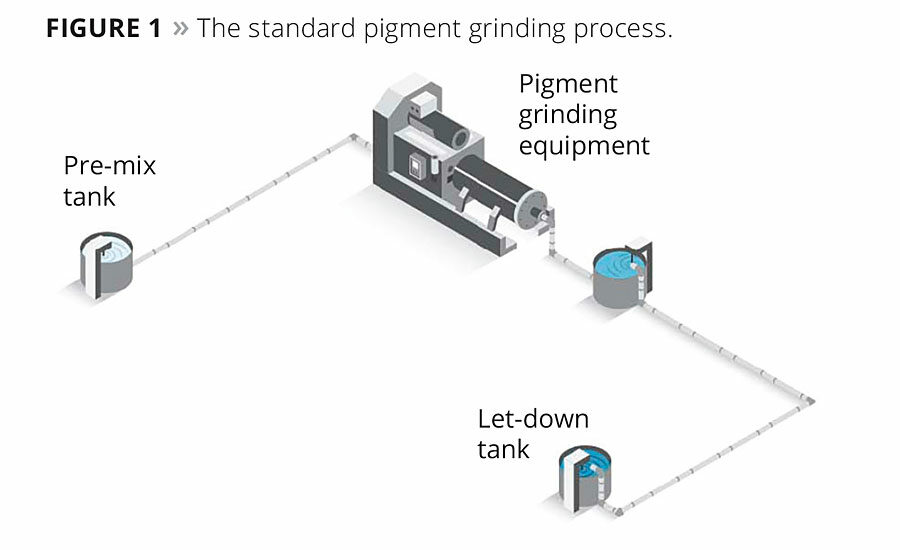
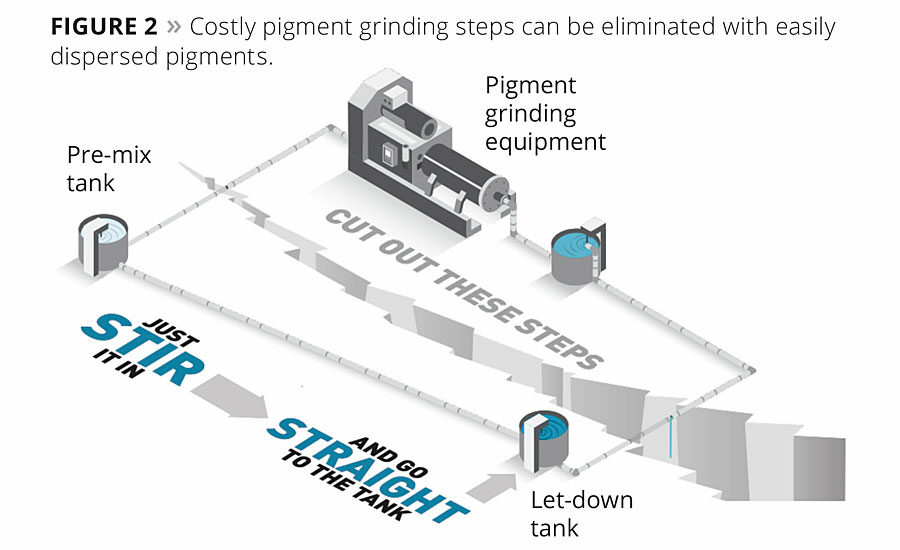
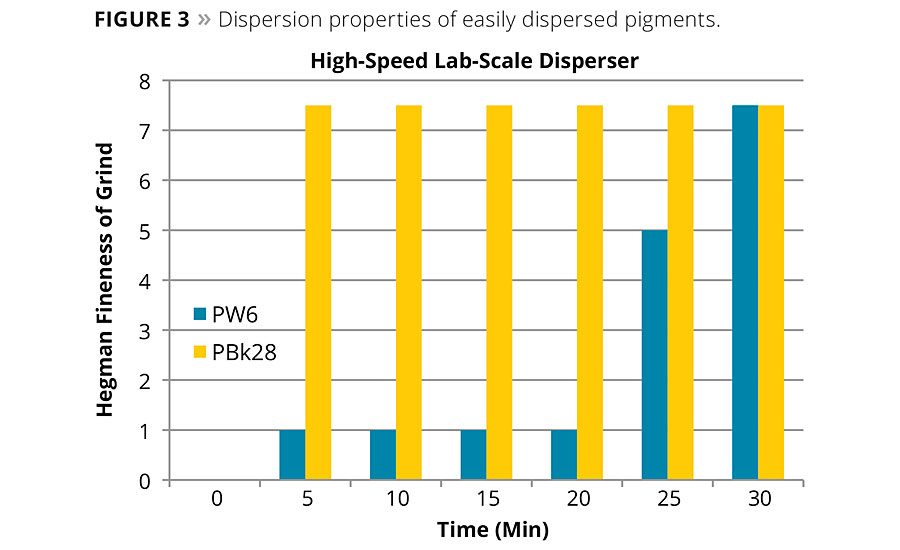
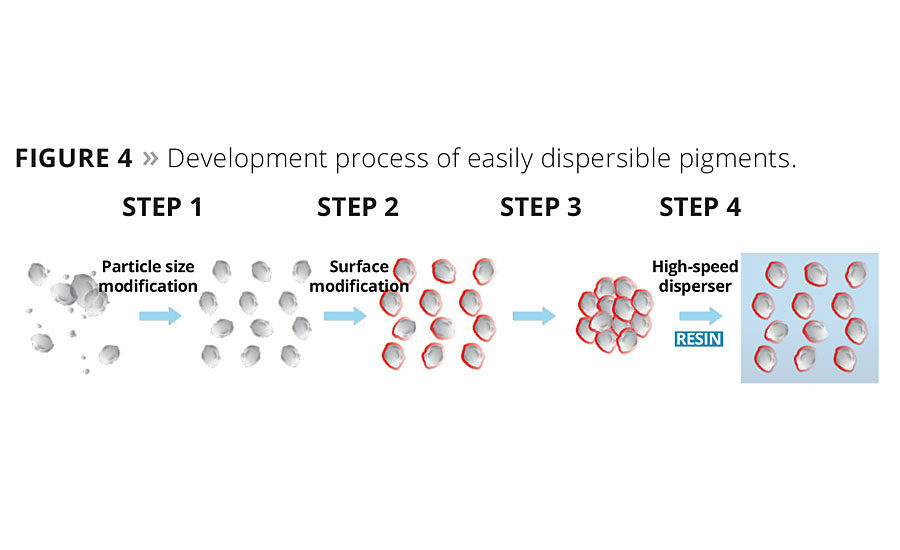

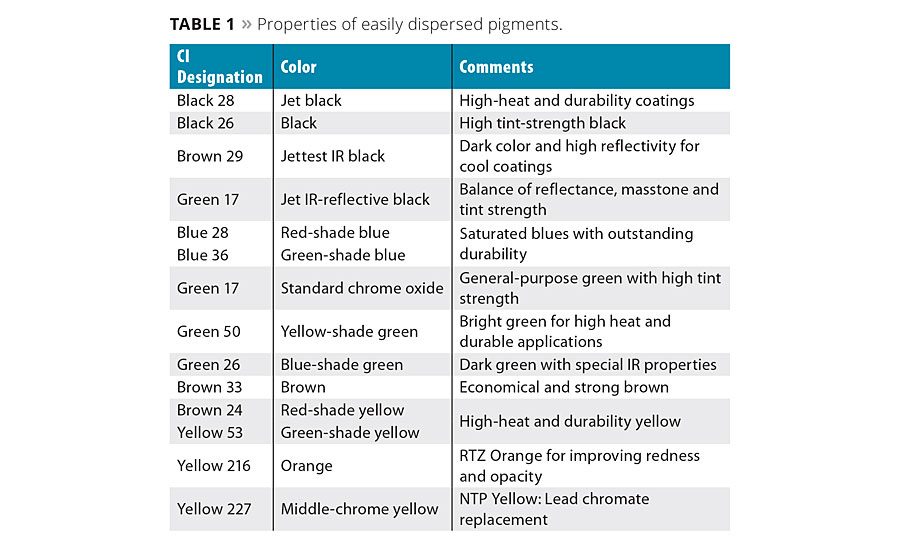
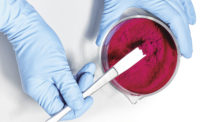
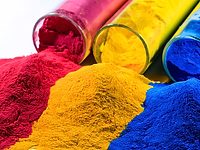


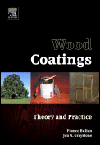
Report Abusive Comment